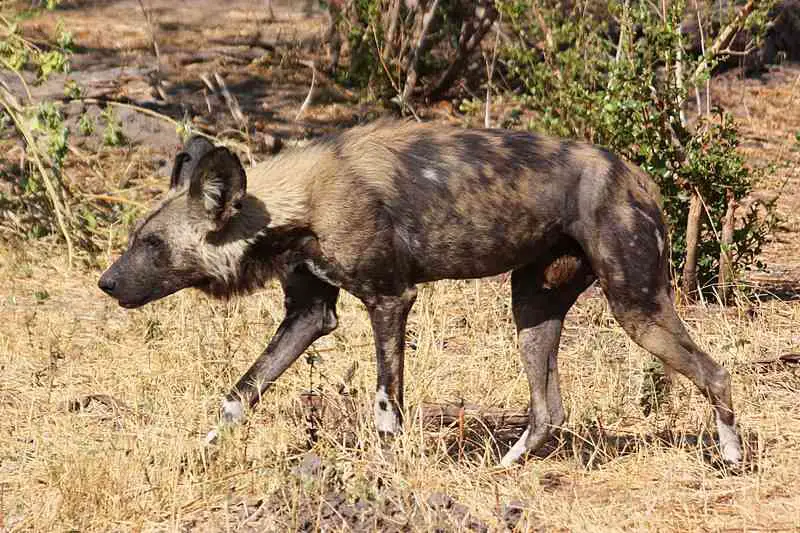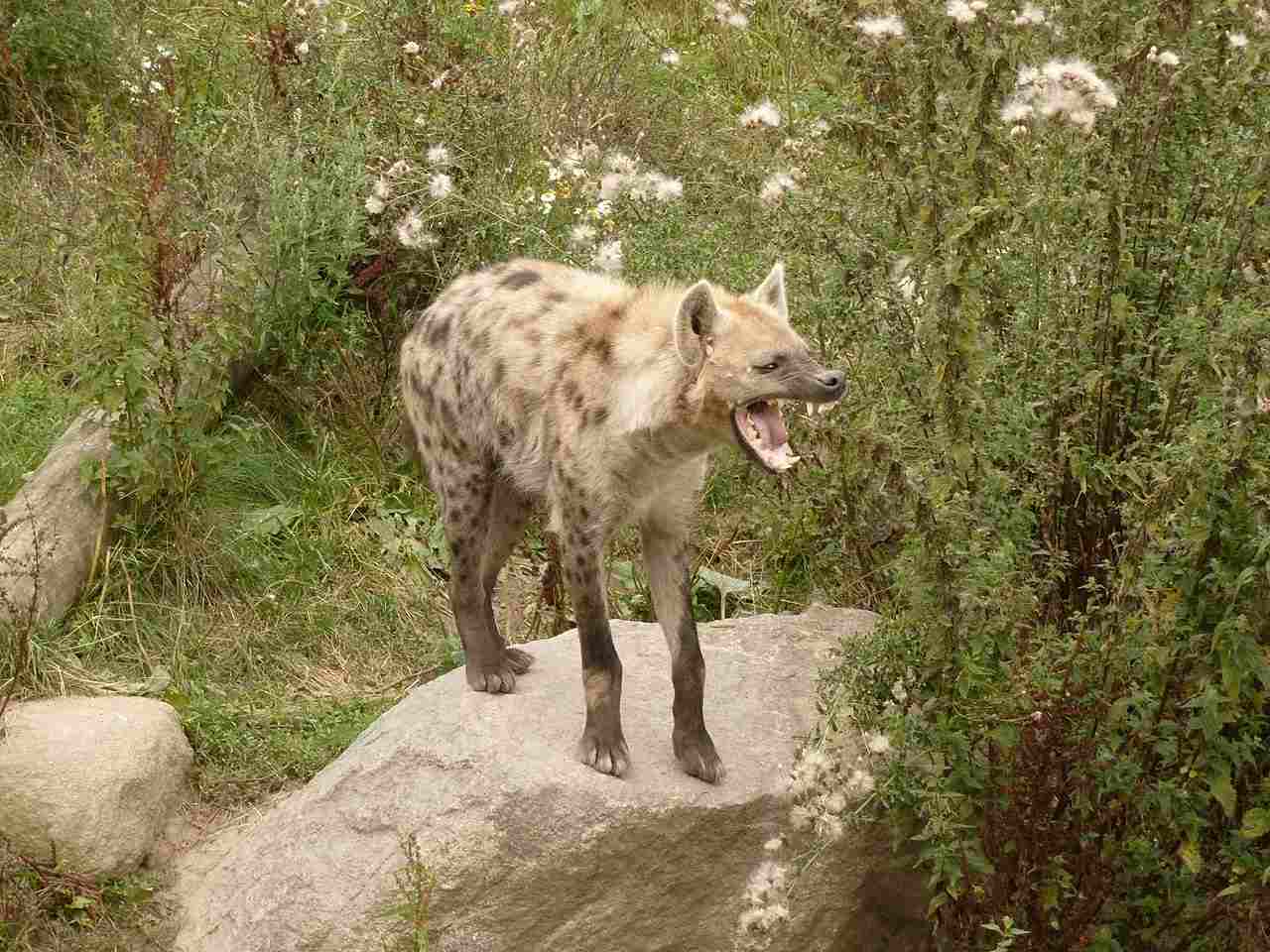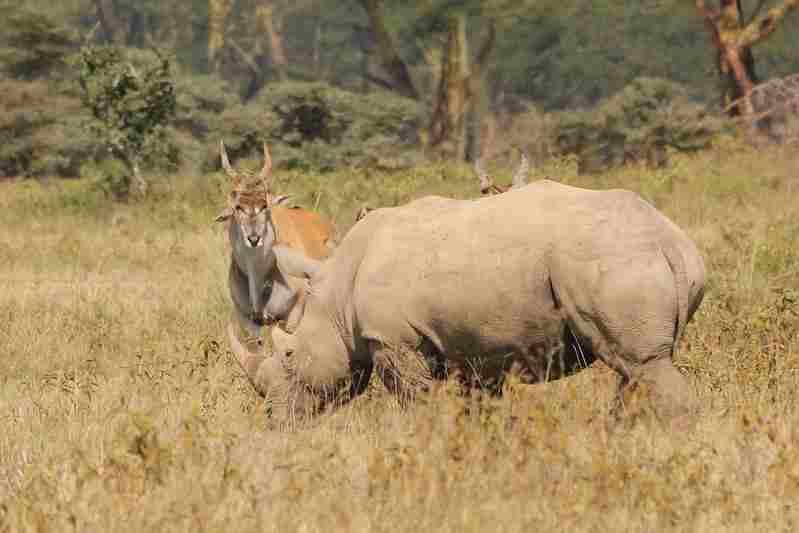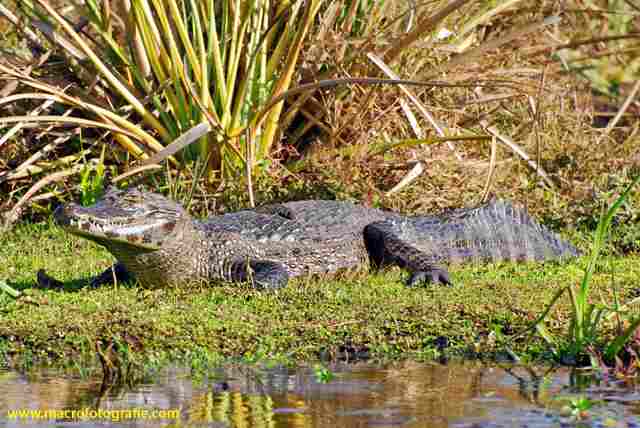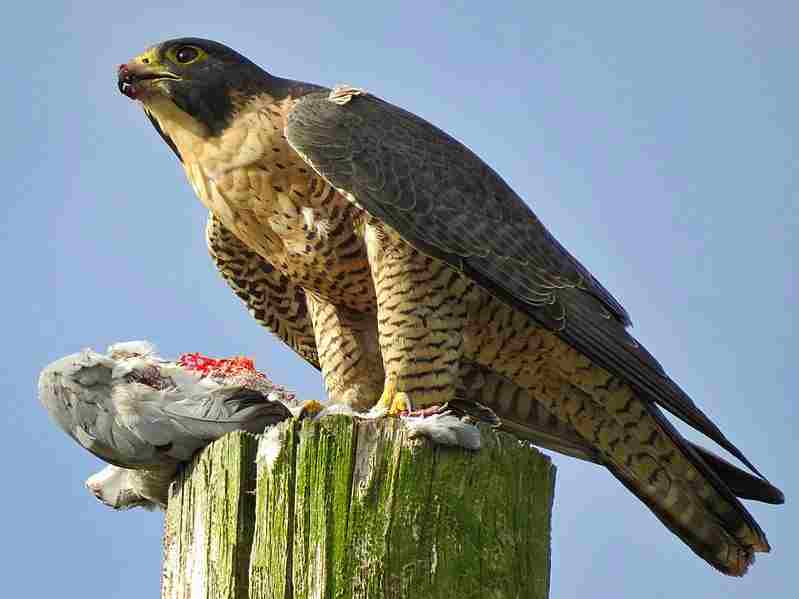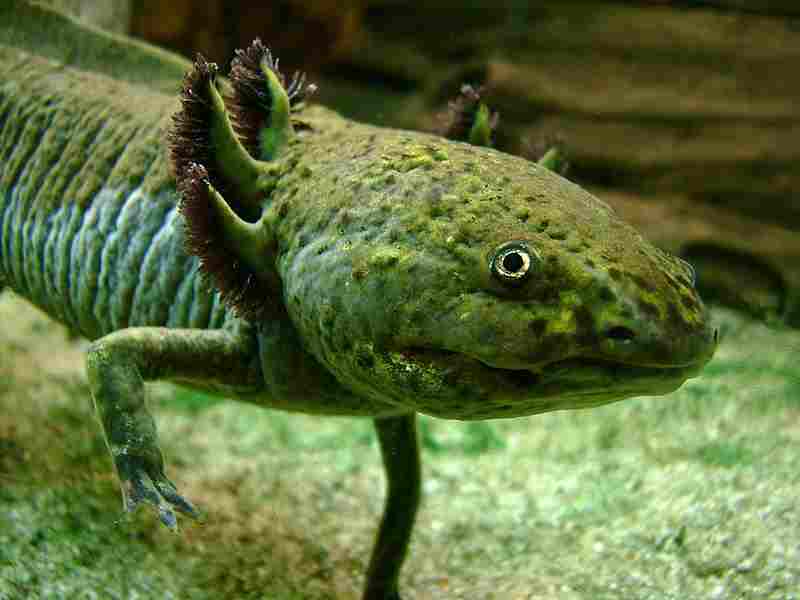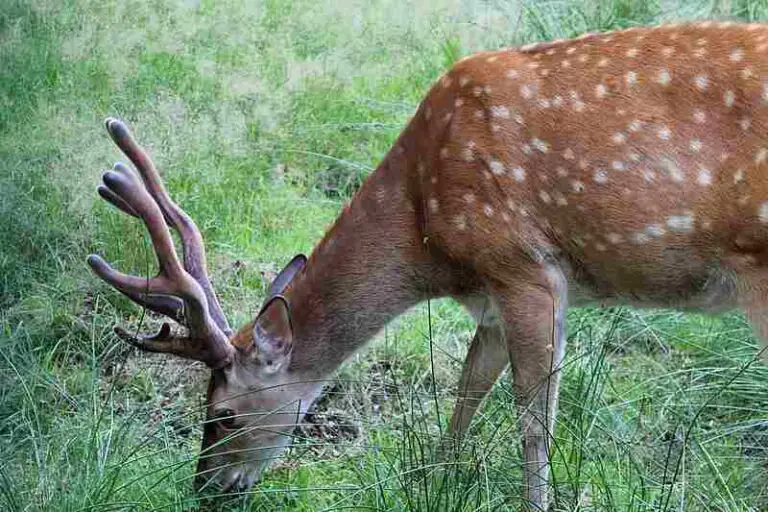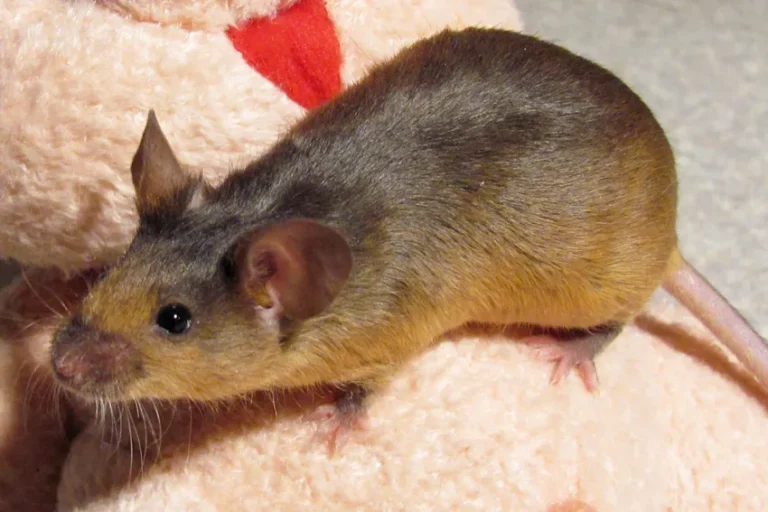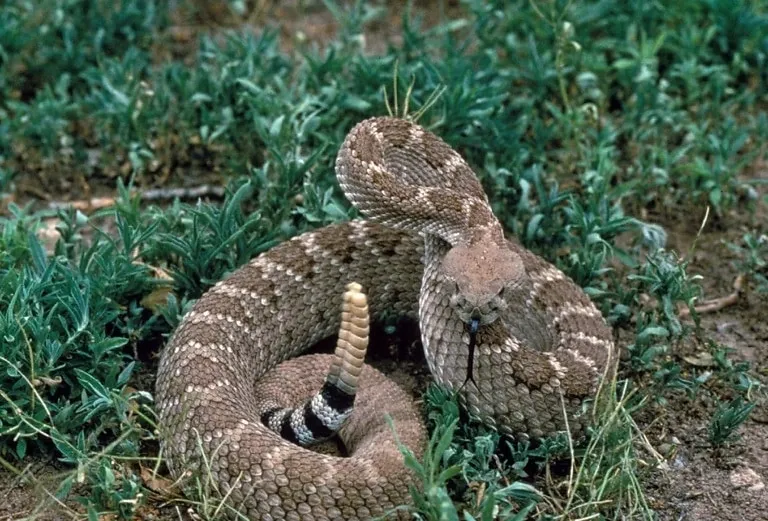Savanna Food Web with Component Chains Discussed
Savanna food web comprises of complex, interconnected series of trophic relationships between producers like grasses and trees; and consumers like bushbuck and spotted hyena, in various trophic levels of the ecosystem.
This article discusses savanna food web based on distinct, interconnected savanna food chains, as follows;
1). Food Chain 1 (as a component of the Savanna Food Web)
The savanna food web is a complex ecological network formed by the trophic relationships between savanna plants and animals in different levels of different savanna food chains, such as food chain 1 that is outlined below;
Primary Producers (Trophic level 1): Grass, Baobab Fruit, Twigs
Primary Consumers (Trophic level 2): Bushbuck, Grasshopper, Giraffe, Parrot (Omnivorous)
Secondary Consumers (Trophic level 3): Baboon, African Wild Dog
Tertiary Consumers (Trophic level 4): Spotted Hyena, Leopard
The levels in this food chain represents Producers, Primary Consumers, Secondary Consumers, and Tertiary Consumers, respectively.
Each of these levels plays its own role within the savanna ecosystem, based on trophic relationships between organisms, and the manner in which such relationships affect the sustainability of abiotic and biotic components, recycling of resources, and overall environmental conditions.
*Trophic Relationships
Producers in food chain one of the savanna ecosystem are; grass(es), and trees like the baobab; which produce fruits and twigs.
As a primary producer in the food chain, grass is autotrophic, and capable of both capturing and utilizing visible light from solar radiation to produce biomass and bioenergy [3]. This occurs through the process known as photosynthesis.
Fruits and twigs can be produced by trees, which are also producers occurring alongside grasses in the savanna. The baobab tree is an example of a savanna autotroph that produces fruits, which are edible to herbivorous/frugivorous, as well as omnivorous organisms.
In trophic level two (2); primary consumers occur, which are also herbivorous animals.
Food for these animals comprises mainly of plant matter, which in the case of this food chain, includes grasses, twigs and fruits.
Examples of such primary consumers in the savanna food web are; bushbuck, giraffe, grasshopper and parrot. This list shows that savanna biome has a significant level of species richness/biodiversity, as it represents various categories of animals including mammals, insects and birds.
Bushbuck feed on twigs, leaves from trees, and grass.
The giraffe is a long-necked browser and can consume leaves and twigs from tall trees [1].
Grasshoppers consume wildflower leaves and grass; while parrots will feed on various plant materials including flowers, seeds and fruits.

Trophic level three (3) is occupied by secondary consumers including carnivorous (and some omnivorous) animals that can feed on plant matter.
The secondary consumers in this food chain are; baboon, African wild dog, spotted hyena, and leopard.
Baboon is a primate with omnivorous feeding habits, whose diet comprises fruits, seeds, insects (like the grasshopper), as well as small herbivores [5].
The African wild dog is a medium-sized, carnivorous canid whose habitat includes the savanna, where it hunts as part of a pack, and preys on mostly herbivores like the hare and bushbuck.
On the other hand, the spotted hyena is a scavenger with opportunistic feeding tendencies. They occupy trophic level four (4) as tertiary consumers in the savanna food web, and can prey upon both herbivores and vulnerable carnivores.
Leopards are also savanna tertiary consumers, with a high level of adaptability, sensitivity, agility and hunting prowess. Food for this feline comprises of birds, reptiles, small mammals, ungulates, and other carnivores.
Animals like the parrot and baboon in this food chain, are omnivorous, and benefit from having a broad range of food choices.
The savanna food chain is a simplified, linear ecologic model of energy transfer and feeding relations. It branches out to other simplified linear chains to form the complex framework that is the savanna food web, as is shown further in this article.
2). Food Chain 2 (as a component of the Savanna Food Web)
Primary Producers (Trophic level 1): Shrubs, Baobab Fruit, Grass, Roots, Acacia Leaves
Primary Consumers (Trophic level 2): Zebra, Elephant, Gazelle, Giraffe, Kudu
Secondary Consumers (Trophic level 3): Vervet Monkey (Omnivorous), African Wild Dog
Tertiary Consumers (Trophic level 4): Cheetah, Vulture, Spotted Hyena
*Trophic Relationships
To begin with, it must be noted that this food chain includes some recurring animals from Food Chain 1; such as the spotted hyena and African wild dog; as well as recurring producer-food materials like grasses and baobab fruit.
It is such inter-chain trophic links that build-out to form the savanna food web.
Producers and their derived food materials in this section/chain of the savanna food web are; shrubs, baobab fruit, grass and roots.
Shrubs are primary producers whose foliage, branches and (if available) fruits are consumable for herbivores.
Baobab trees produce fruits for frugivorous herbivores and omnivores. Grass and roots may also be consumed by herbivores.
Browsers like giraffe can feed on acacia leaves.
Other primary consumers/herbivores asides the giraffe in this food chain are; zebra, elephant, gazelle and kudu.
Food for the zebra consists chiefly of grasses.
Elephants can consume various plant materials including grasses, tree bark, roots and leaves.
The gazelle and kudu are savanna antelopes that feed on grasses, shoots, and leaves.
In trophic level three (3), secondary consumers of the savanna food web include vervet monkey and African wild dog from this food chain.
The vervet monkey is a primate with omnivorous feeding habits, whose food sources include leaves, fruits (like baobab), insects, seeds, leaves, and small vertebrates.
African wild dog in this food chain signifies a complex trophic relationship between multiple chains (1 and 2). It is among the organisms whose simultaneous roles in multiple chains help to form the framework on which the savanna food web is built.

In trophic level four (4), tertiary consumers occur.
Tertiary consumers in the savanna food web from this chain are; cheetah, vulture and spotted hyena.
Cheetahs are carnivorous felines whose prey includes herbivores like kudu, impala and gazelle.
The vulture is a bird whose position as a tertiary consumer is traceable to scavenging habits that enable it to feed on the remains of other animals in any trophic level.
The spotted hyena can also function as a scavenger, as well as a predatory animal.
Aside the multi-chain occurrence of wild dogs, another source of complexity to this food chain is omnivorous feeding, which makes an organism to function at various trophic consumer-levels, as is the case for the vervet monkey.
3). Food Chain 3 (as a component of the Savanna Food Web)
Primary Producers (Trophic level 1): Seeds, Twigs, Shrubs, Grass
Primary Consumers (Trophic level 2): Wildebeest, Bushbuck, Zebra, Nile Rat, Naked Mole Rat, Termite
Secondary Consumers (Trophic level 3): Jackal, Baboon
Tertiary Consumers (Trophic level 4): Cheetah, Spotted Hyena
Quaternary Consumers (Trophic level 5): Lion, Leopard, African Crowned Eagle
*Trophic Relationships
The links between this food chain and chains 1 and 2; are evident in the recurrence of animals like cheetah, spotted hyena, bushbuck and baboon; as well as plant materials like grass, shrubs and twigs.
In trophic level one (1), plant-related materials are present, such as seeds, twigs, shrubs, and grass.
These materials are consumed by the primary consumers (trophic level 2), which include; wildebeest, bushbuck, zebra, Nile rat, naked mole rat, and termite.
Wildebeest, bushbuck and zebra are large mammalian grazers that feed on shoots, leaves, grasses, and occasionally; fruits.
The Nile rat and naked mole rat are both herbivorous savanna rodents whose food includes leaves, grasses, seeds, tubers, and roots [2] [4].
Termites are not core herbivores. Rather, they are detrivorous insects that feed on autotrophic and heterotrophic materials like lichen, dung, and wood. They can be classified among primary consumers in the grassland because the most accessible food materials for them in this ecoregion are plant materials.
In level three (3), the jackal represents a medium-sized carnivore and secondary consumer. which is opportunistic and may feed on insects, birds, small mammals, reptiles, and carrion. It shares its trophic level with the baboon, known for its omnivorous dietary habits.
The cheetah and spotted hyena in this food chain are not apex predators, although they occupy trophic level four as tertiary consumers. This is because of the presence of a fifth level occupied by quaternary consumers including lion, leopard and African crowned eagle.
Lion and leopard can be placed above the cheetah, which is a fellow feline, because of their superior size and power in comparison to the latter. Food for these carnivores includes large herbivores like wildebeest, buffalo and zebra, alongside other carnivores, small mammals, reptiles and birds.
Summary and Conclusion: Role of Individual Chains in Forming the Savanna Food Web
Below is an outline of the three savanna food chains discussed in this article;
Food Chain 1: (Trophic level 1) grass, baobab fruit, twigs→(Trophic level 2) bushbuck, grasshopper, giraffe, parrot→(Trophic level 3) baboon, African wild dog→(Trophic level 4) spotted hyena, leopard
Food Chain 2: (Trophic level 1) shrubs, baobab fruit, grass, roots, acacia leaves→(Trophic level 2) zebra, elephant, gazelle, giraffe, kudu→(Trophic level 3) vervet monkey, African wild dog→(Trophic level 4) cheetah, vulture, spotted hyena
Food Chain 3: (Trophic level 1) seeds, twigs, shrubs, grass→(Trophic level 2) wildebeest, bushbuck, zebra, Nile rat, naked mole rat, termite→(Trophic level 3) jackal, baboon→(Trophic level 4) cheetah, spotted hyena→(Trophic level 5) lion, leopard, African crowned eagle
These chains are the simplified building blocks of the savanna food web.
Proof of such an assertion is available in the compositions of the food chains themselves, which include recurring/mutually-shared individuals or organisms like;
1. Grass (chains 1, 2, 3)
2. Baobab fruit (chains 1, 2)
3. Shrubs (chains 2, 3)
4. Bushbuck (chains 1, 3)
5. Spotted hyena (chains 1, 2, 3) ... among others
The appearance of these organisms in multiple chains indicates connective nodes between such chains, that establish the framework on which the food web is built.
References
1). Cameron, E. Z.; du Toit, J. T. (2007). "Winning by a Neck: Tall Giraffes Avoid Competing with Shorter Browsers." The American Naturalist 169(1):130-5. Available at: https://doi.org/10.1086/509940. (Accessed 8 June 2023).
2). Faulkes, C. G.; Bennett, N. C. (2013). "Plasticity and constraints on social evolution in African mole-rats: ultimate and proximate factors." Philos Trans R Soc Lond B Biol Sci. 2013 Apr 8;368(1618):20120347. Available at: https://doi.org/10.1098/rstb.2012.0347. (Accessed 8 June 2023).
3). Mantlana, K. B.; Arneth, S.; Veenendaal, E. M.; Wohland, P.; Wolski, P.; Kolle, O.; Wagner, M.; Lloyd, J. (2008). "Photosynthetic properties of C4 plants growing in an African savanna/wetland mosaic". J Exp Bot. 2008;59(14):3941-52. Available at: https://doi.org/10.1093/jxb/ern237. (Accessed 8 June 2023).
4). Orsar, J.; Agbelusi, E. A. (2006). "Foraging habits of the Nile rat, Arvicanthis niloticus, in the Guinea Savanna of Nigeria." African Journal of Wildlife Research 36(1):69-74. Available at: https://docplayer.net/32873980-Foraging-habits-of-the-nile-rat-in-the-guinea-savanna-of-nigeria.html. (Accessed 8 June 2023).
5). Sommer, V.; Lowe, A.; Jesus, G.; Alberts, N., Bouquet, Y.; Inglis, D. M.; Petersdorf, M.; van Riel, E.; Thompson, J., Ross, C. (2016). "Antelope Predation by Nigerian Forest Baboons: Ecological and Behavioural Correlates." Folia Primatol (Basel). 2016;87(2):67-90. Availablr at: https://doi.org/10.1159/000445830. (Accessed 8 June 2023).
